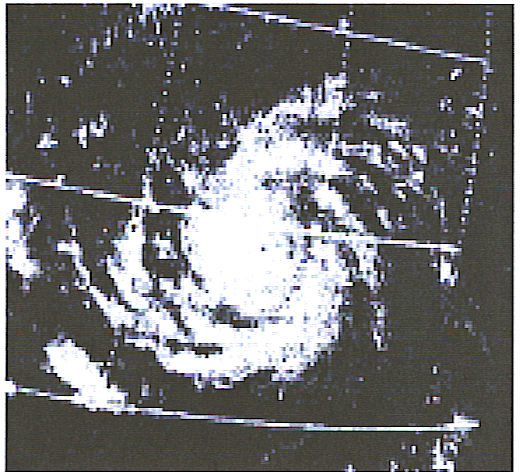
Last Friday, President Gloria Macapagal-Arroyo put the entire country in a state of calamity. As we have all been told, there are two reasons for this: 1) to make sure that prices of basic commodities are stable; and 2) to allow the government and its counterparts in the local government to quickly mobilize resources through easy access to their calamity fund.
The intentions look good at face value. But sectors are more alarmed than pleased, especially now that there are moves to put the country in a state of calamity for an entire year.
My bottom line question is: should it take the national and local governments an entire year to get things back to normal, particularly the metropolis? This only underscores the observation that the government has been acting too slow.
Well, if the national government and its counterparts in the LGUs do not act fast enough, let them be reminded about one thing: 2010 is an election year. Ondoy has become an election issue. And if it takes an entire year to clean things up, then expect the reelection bids of mayors to go with the piling trash. And the same thing might just happen to the presidential bid of administration-backed Gilbert Teodoro, who is also NDCC chairman.
The business community is also complaining. Groups like the Makati Business Club and Federation of Philippine Industries believe that a one-year state of calamity will not only be harmful to business but also impossible to sustain since there are external factors to consider like the cost of raw materials. Can the president even impose a price ceiling for a year? Under the Price Act (RA 7581), a price ceiling can only be enforced for a maximum of two months.
A number lawmakers are also against a one-year state of calamity.
One-Year State of Calamity Goes Beyond June 30, 2010
For me, political analyst Mon Casiple, whom I have interviewed several times in the past for several issues, has written a good analysis of the state of calamity. I agree with his view that the looming extension is really more of a political move. Let me to quote his analysis:
- It (the state of calamity) allows the national and local governments throughout the country–including those in areas without calamity–to draw from their calamity and contingency funds.
- It allows the executive department, particularly the President, to have an excuse to transfer funds from other budgeted items and funds under her care (virtually most of the national budget plus non-budget funds) to the calamity funds.
- It allows the executive department, local governments, and other government agencies involved in relief and rehabilitation to shortcut procurement rules and anti-corruption measures–all in the name of past, present, and future disasters.
- The declaration allows the use of the military and police in enforcing a more stringent “peace and order”, such as the “forced evacuation” of people from places designated as areas prone to natural and man-made disasters (example: rebel-influenced barangays).
- In an election period, the temptation is simply too great to use the easily-accessed calamity funds for electioneering purposes.
- A year is beyond June 30, 2010: is there something that Malacañang knows that we don’t?
The Department of Budget and Management should see to it that all disbursed funds indeed go to those who need it. Likewise the Commission on Audit should double check if funds will be used properly. I produced a TV news story in 2007 showing that after typhoons Reming and Seniang in 2006, funds were allocated to provinces which were not affected by typhoons according to reports produced by the NDCC itself. Funds were released in 2007, which was also an election year.
The government has the mandate and responsibility to gather and use its resources to bring normalcy back to areas hit by the typhoons. But it should not take an entire year to bring things back to normal, especially when we consider that it is in the national capital region where most business and government transactions are made. When economic activity stops in the NCR, we can just imagine its effect in the national economy.
Yoling = Ondoy = Term Extension?

I am somehow worried about a one year state of calamity that goes beyond June 30, 2010. Just a few days after Ondoy, I was reminded of typhoon Yoling. Yoling was one of the worst typhoons to ever hit the Philippines. The effects were catastrophic as well. Many of those who are old enough to remember Yoling would compare Ondoy to the 1970 typhoon. The unfortunate part: the destruction caused by Yoling was used as part of the basis — excuse — to declare martial law. Martial law was declared to “save the republic”. But we all know that it just extended the rule of Ferdinand Marcos, who was not allowed to run for a third term. So, shall we need “saving” again?
Bayan Muna Rep. Satur Ocampo, whom I have interviewed today, says there is no need to be alarmed just yet. The Arroyo government will not be able to declare martial law and extend its term on the sole basis of a state of calamity. It will take more than that. In the case of martial law in 1972, Ocampo says, there was widespread violence and rebellion, which Marcos had used as a basis along with the damage brought by Yoling.
Still, there is a need to be vigilant. The party-list solon observes that PGMA has been exhausting every means to extend her term — and this state of calamity is now part of the list of political moves. Ocampo says Congress, as usual, would be ready to question any moves to extend the President’s term. If the state of calamity were to last one year, Ocampo says there is a need for periodic assessments of the situation to see to if the state of calamity will be lifted sooner, and to make sure that the government and its allies will not take advantage of the situation.
For its part, the Palace has repeatedly denied any plans of declaring martial law.
Related Links:

Frankly I cannot put any credence behind these conspiracy theories for the simple fact that if GMA ever announces that she’s extending her term, or delaying the elections, people will flip out and riot on the streets. We have a history of deposing sitting presidents, and ever since marcos we’ve had a ridiculous tendency to view any political move as dictatorial, and act out accordingly.
Does GMA want to face the wrath of hundreds of thousands of volunteers that took to relief centers in the wake of Ondoy? Because those same people will march out onto the streets if she pulls any funny moves.
Of course I’d rather it not reach that point, because of the turmoil and economic regression that’s sure to follow, but I am not in the least afraid that gloria wil last beyond 2010.
Oh, I agree with you and I am very sure of that — that any moves from PGMA to extend her term will be met with wrath by the public. Still, there is need to be vigilant. The administration has shown many times that it is out of touch with what the majority is saying and what the majority wants. For example, despite stiff opposition from the people, the Arroyo government has been perceived to be exhausting all means to extend its term through charter change. Add to this speculation about PGMA running for congress next year. And, if the public is not vigilant, who knows, even the state of calamity may be taken advantage of. Truth be told, I do hope I’m wrong. But either way, vigilance is needed — to watch out for any attempts of this government to extend its term, and to make sure all funds are used properly. Given RP’s track record, do we have the assurance at this point that 100% of calamity funds will be used to help those in need?